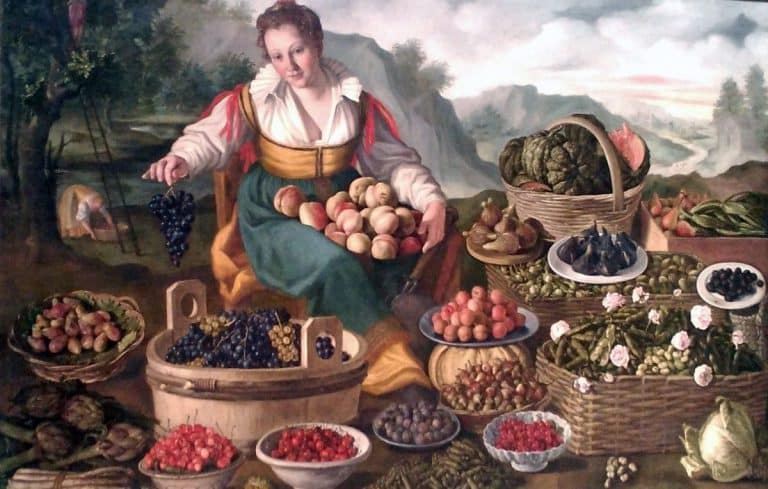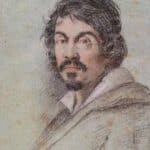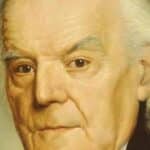The Campi brothers
Giulio, Antonio and Vincenzo Campi were three artists, brothers, active in the Lombardy of the sixteenth century. Painters in great demand both by religious and secular commissions, the three started a real family workshop in Cremona, their hometown, but whose activity reached as far as Milan.
Cremona was characterized, throughout the course of the sixteenth century, by a fervent and prolific artistic environment. The border position allowed the local culture to open up to Venetian, Emilian, Milanese and Mantuan influences. This characteristic was reflected in the numerous artistic commissions, favoring the proliferation of the activity of “foreign” artists of the caliber of Romanino and Pordenone. Equally fundamental for the development of Cremonese artistic culture were the relations with northern Europe (especially with the Flemish environment in the first decades of the sixteenth century).
The workshop of the Campi family developed in this lively cultural environment. The progenitor was Galeazzo, father of the three brothers and also active as a painter in Cremona. He had little influence on the style of his children, so much so that the real starter of the campesca school can be identified in the figure of his first-born, Giulio. He also covered the fundamental role of guide for the start of the business of the two younger brothers. The artistic production of the family was requested by numerous clients, due to the ability to make the innovations of those years their own while maintaining their own distinctive characteristics. The workshop of the Campi brothers also distinguished itself in the city environment for the training of several students (one of the best known was Lattanzio Gambara).
The fame achieved by these artists was great and such was maintained even in the following centuries.
The artistic production of the three brothers is characterized by a certain stylistic commonality, under the guidance of the eldest of the three, Giulio.
At the same time, the ability of Antonio, and even more of Vincenzo, to have undertaken his own and personal path must be recognized. If for some works still today the doubt remains as to who the author among the three is, we are witnessing a progressive passage, from the major to the minor, from a more fashion art to a greater search for naturalism.Fundamental to Giulio’s artistic training was a Mantuan trip, where he came into contact with Giulio Romano, one of Raphael’s most famous pupils. This meeting had enormous repercussions on his production: in the works of Giulio Campi it is indeed possible to find greater attention to Raphaelesque and Michelangelo models starting from this moment.
Among the main campaigns that demonstrate this influence are the frescoes in the church of San Sigismondo in Cremona, an undertaking which, like many others, saw the presence of Antonio alongside the major.
In these years Antonio’s art was characterized by a close proximity to that of Giulio, thanks to the position of teacher he held. If some commissions register the payments in the name of Giulio alone, it is now attested that in reality the two collaborated in the realization of the works. This is the case of the frescoed rooms in Palazzo Barbò in Torre Pallavicina (BG), an example of mannerism. In fact, Michelangelo’s muscular figures and classical models are recalled (the face of Neptune in the room on the first floor is derived from Laooconte). Ample space is also given by the grotesque decoration, used on several occasions by ours.
It was only in the 1960s that Antonio began to truly personalize his works, distinguishing himself more and more from his brother. This change led him to be the favorite of the client from Milan, where the two moved in this decade. There are numerous works created for the most important city churches or for prestigious clients.

From 1569 is the famous Crucifixion with episodes from the Passion of Christ , preserved at the Musée du Louvre.
But the two canvases in which the innovation of which Antonio was the bearer is truly appreciable are later:
the Beheading of the Baptist in 1571 and the Martyrdom of San Lorenzo in 1581, both made for the church of San Paolo Converso. In these paintings a greater attention emerges to the naturalistic rendering, certainly following studies of models from life, also for the luministic effects.
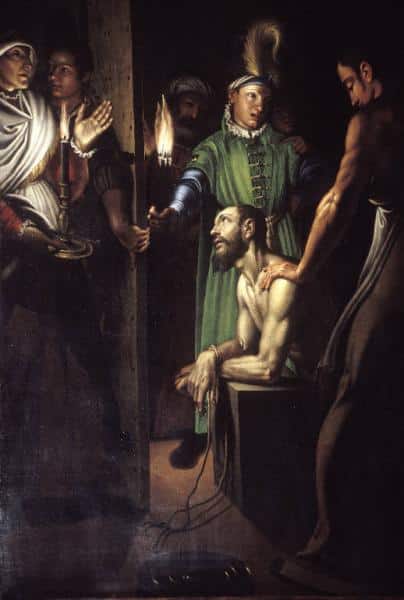
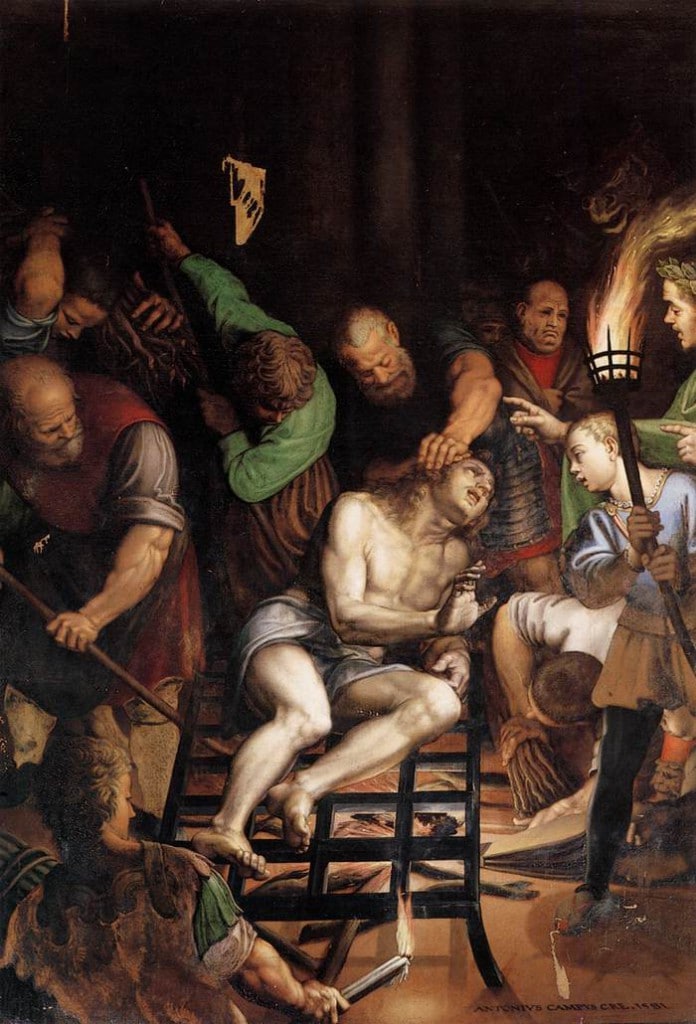
The real innovator of the three, however, was the youngest, Vincenzo.
He too, like Antonio, learned the art of painting thanks to the teachings of Giulio. A real turning point in Vincenzo’s career took place in 1572. Following the death of Giulio, the youngest of the Campi began to support Antonio in the prestigious commissions of those years. Vincenzo’s art underwent a real stylistic change, characterized by a reflection on the art of Brescia and in particular that of Savoldo. Even the search for naturalism is different from the similar researches already started by the brothers, who were in any case affected by the influence of the “manner”. Vincenzo’s naturalistic research was characterized by a careful investigation of the truth that is seen even more in the rendering of light, anticipating the spectacular effects that were achieved by Caravaggio.
The most prolific pictorial trend, developed starting from the Eighties, is constituted by a high expressive charge in the representation of the characters.
In the nineties, his best-known works were created, characterized by an intense popular realism of clear Nordic ancestry.
Vincenzo, however, was able to deal with the subject in a very personal way. He made the scenes of real still lifes with the presence of characters belonging to the lower class. The work that best expresses this stylistic typology is The Fruit Vendor, kept at the Brera Art Gallery.
